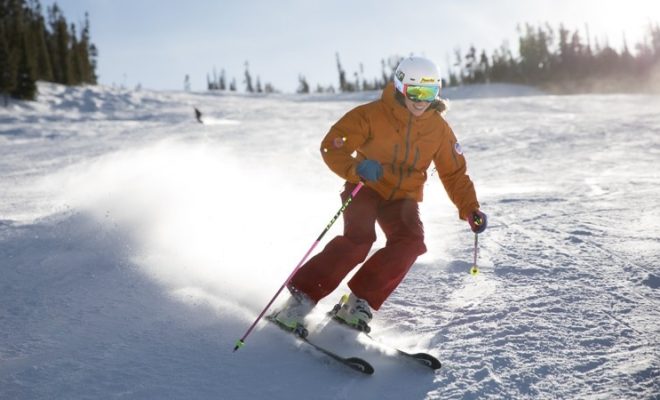3 Ways to Turn when Skiing

Introduction:
Skiing is an exhilarating winter sport enjoyed by people of all ages and skill levels. One crucial aspect of skiing is mastering the technique of turning, which enables skiers to navigate different terrains and maintain control on the slopes. In this article, we will discuss three ways to turn when skiing: the snowplow turn, parallel turn, and carving.
1. Snowplow Turn:
The snowplow turn, also known as the wedge turn or beginner’s turn, is the most basic turning technique taught to beginners. This turn allows getting a feel for controlling speed while transitioning from side-to-side motion.
To execute a snowplow turn:
a. Start by positioning your skis in a “V” shape with the tips pointing inward, resembling a snowplow.
b. Gently distribute your weight over the inside edge of both skis while maintaining a flexed knee position.
c. Slowly shift your weight to one leg and apply more pressure on the inside edge of the corresponding ski.
d. This will create resistance against the snow, causing your body and skis to change direction naturally.
e. Make sure to focus on controlling your speed to prevent from picking up too much momentum when turning.
2. Parallel Turn:
As you progress with skiing, you may move on to parallel turns which are more efficient and provide greater control at higher speeds. In this technique, both skis remain parallel throughout the turn.
To perform a parallel turn:
a. Start skiing in a straight line with your knees slightly bent.
b. Begin shifting your weight onto the inside ski as you initiate the turn.
c. Simultaneously, rotate your lower body (hips) in the direction of your desired turn while keeping your upper body stable and facing downhill.
d. At mid-turn, transfer weight onto your outside ski and continue applying pressure on its inside edge.
e. Gradually bring your skis together to complete the turn and glide smoothly into the next one.
3. Carving:
Carving is an advanced turning technique recommended for skiers comfortable with parallel turns and seeking to improve their turning proficiency. In carving, the ski’s sidecut and camber are utilized in generating smooth, high-speed turns.
To master a carving turn:
a. Initiate the turn by rolling your ankles and knees towards the turn direction while maintaining your skis parallel.
b. Your ski edges will engage with the snow, creating a platform to lean on during the turn.
c. Apply pressure on the inside edges of your skis, focusing on maintaining a stable stance.
d. Allow the skis’ natural sidecut and camber to guide their arc through the turn.
e. As you complete your carved turn, release the pressure on your edges and transition into the next one smoothly.
Conclusion:
Learning and perfecting these three turning techniques – snowplow, parallel, and carving – will enhance your skiing experience and ensure that you have a safe, enjoyable time on the slopes. Remember to practice at your own pace, employing proper safety measures, and always ski within your ability level. Happy skiing!

